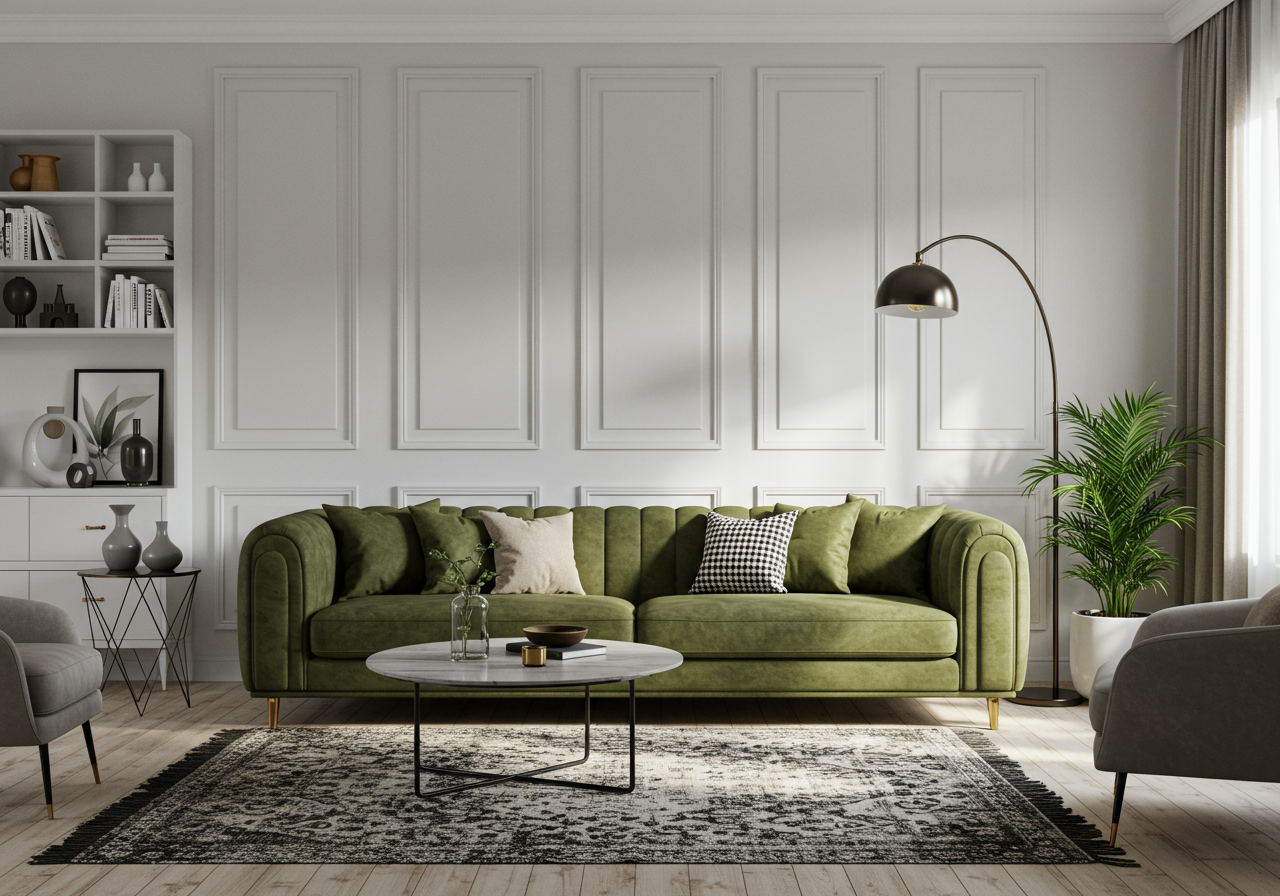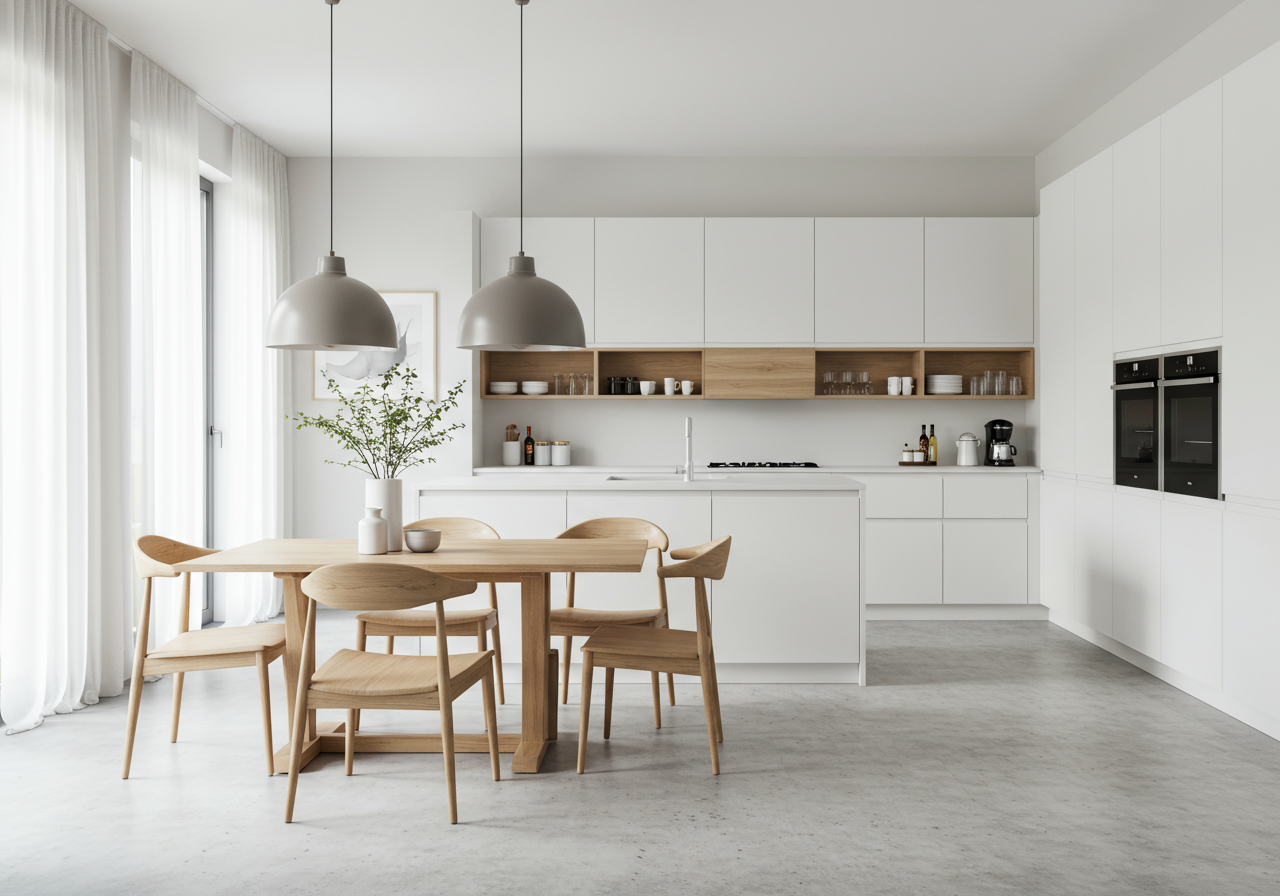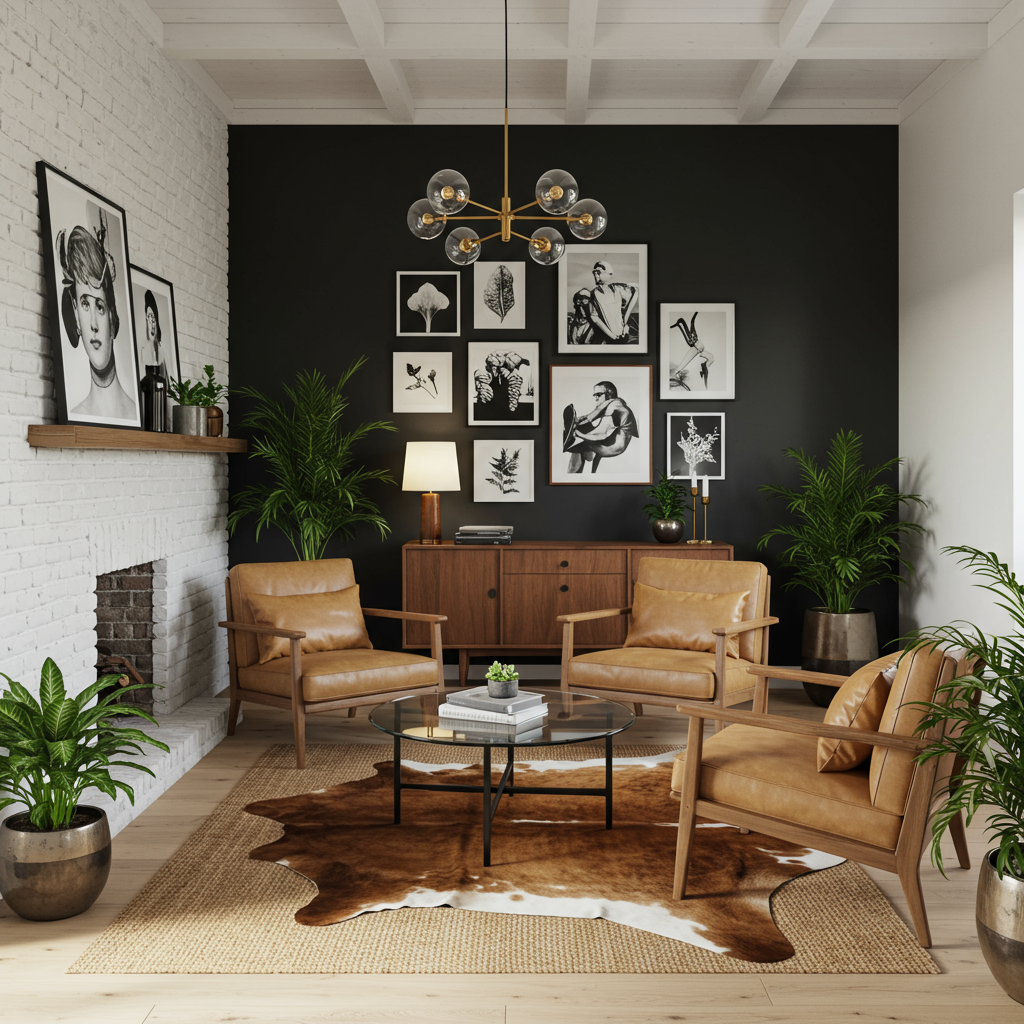The COVID-19 pandemic has had a lasting impact on us all, with many of us picking up or exploring new positive ways to improve our wellbeing and way of living.
Some of us picked up new hobbies, others learned a new language, and the brave few even brought home new pets. We have all gained a greater appreciation for comfort, nature, and health through the turbulent times that were 2020.
In an interview with Vogue, interior designer Timothy Corrigan of Timothy Corrigan Inc. stated that “there is more and more research that shows the direct influence that our homes have, not only on our moods but our overall health and well-being.”
And luckily for those of us with a fondness for colour, layout, decor, and application, these themes have influenced the most popular interior design trends of 2022.
As such, it is no surprise that after years of a global pandemic, the most popular design trends of 2022 are centred on creating spaces that make us feel emotionally at ease.
For those interested in Canadian real estate, and more specifically for those living in Oakville, Ontario, these 2022 design trends might be all the inspiration you’ve been looking for.
TABLE OF CONTENTS
Rounded Edges
Minimalism
Inspiration From Nature
House Plants
Travel Inspired Interiors
The Take-Away
Rounded Edges
Designers of all industries have used rounded corners for so long that they’re more industry-standard than a simple design trend. In today's world, rounded edges can be found on software user interfaces as well as hardware product designs, such as cellphones and laptop screens.
You might be wondering, what is it about rounded corners that make them such a staple in design? Not only do they look appealing, but psychologically they have a lot to offer.
Some experts say that rectangle shapes with rounded corners are much easier on the eyes than a rectangle with sharp edges. It is said that rounded corners take less cognitive effort to visually process.
To take it a step further from a technical perspective, it's worth noting that processing edges involve more “neuronal image tools” in the brain - essentially, it's just a lot more work. Thus, rectangles with rounded corners are easier to process because they look closer to a circle than a regular rectangle.
Given that, it’s no surprise that softer, curved furniture and décor is a design trend that has survived the pandemic. Picture free-from sofas, drum coffee tables, and arched doorways/windows.
This year, curved furniture goes beyond C-shaped sofas and includes anything from soft-edged tables to new contemporary style chairs.
Softer edges can create a sense of lightness, giving a room a charmed, feminine, romantic feel.
Interior designer Sarah Sherman Samuel explains that “a curved form is subconsciously read as safe, friendly and welcoming. After the hard times of the pandemic, everyone is looking for a warm and inviting space that makes them feel safe.”
Minimalism
Let’s be real, nobody likes clutter.
Cutting back on the number of items we own helps us to feel more in control of our lives and space. In fact, it can be quite liberating.
This applies not only to one’s closets, drawers, offices, or vehicles but also their home.
For interiors, minimalism refers to the presence of air, free space, and minimal decorations/furniture.
During the pandemic clearing out our baggage became a very popular activity for individuals who wanted to get rid of old, unused, or non-functional things. After all, many of us finally had the free time to do so. People cleaned out their garages, purged their closets, and got rid of the furniture they no longer needed.
Although minimalism was introduced in the late 1950s, it hasn't been until recent years that there has been a clear shift in individuals who want to create space that is free of clutter, prioritizing only items of necessity.
Coupled with the desire for a clean, clutter-less space, is the idea of reasonable consumption.
How the Environment Ties Into Minimalism
The importance of sustainability and the adverse effects of fast fashion have taken the world by storm, which applies to the realm of interior design. There is an increased desire to avoid waste and impulse purchasing.
It is no longer necessary to decorate every wall and fill every nook of your home with a piece of furniture. Sustainable Interior Design is a relatively new practice but an important one. When homeowners and designers follow sustainable interior design principles, it allows both parties to reduce the negative environmental impact that old-school practices can induce.
From a sustainability perspective, it’s very important to pick materials and products with the lowest environmental impact. This includes organic materials such as wood, wool, and natural stone, but there are also natural resources that should be considered and are sometimes the better choice for your home and the planet.
For example, materials that are easily renewable, such as bamboo which grows and replenishes quickly, tend to be extracted in an environmentally responsible way. There are also labels, standards, and certifications that you can research that will give credible information about a product’s origin that will help you or your designer identify eco-friendly options for your home.
When it comes to gauging the environmental impact of materials and products it’s essential to evaluate the entire life cycle of the item in question — how are the materials extracted, produced, transported, processed, and discarded after use?
There are standardized tools and labels that can help designers understand, compare and evaluate a product’s environmental impact in distinct phases of its life cycle.
Fortunately for those of us who are very passionate about reducing our carbon footprint, the world of design is becoming more aware of the need for sustainable thinking.
Recycling, upcycling, and repurposing have ignited a growing interest in sustainable trends.
The pandemic has given us an opportunity to examine what is important to us, what we love, and what we really need. For many, this involves minimalism and an affinity for environmentally friendly products that have translated into how we design and decorate our homes.
Inspiration From Nature
If the pandemic has given us anything, it is an appreciation for the outdoors.
As a result, perhaps one of the most predominant design trends of 2022 is the influence of nature. This organic design structure can be applied to colour palettes, textures, decoration, furniture, and décor.
Natural materials like marble, granite, terracotta, and wood are becoming increasingly popular across the board. Think backsplashes, countertops, furniture, and other decorative items.
“The raw, porous, imperfect nature of these organic materials adds depth, soul, and visual intrigue while also mimicking the calming, restorative ambiance of the outdoors,” states interior designer Athena Calderone.
A desire to bring the outdoors in also translates into colour choice.
Earth tones and warm browns have become really popular in 2022. Not only do rich chocolate colours and lighter caramel browns provide a connection to nature, but they also prove to be more welcoming than greys and blacks.
According to Southern Living, shades of brown offer a more custom, and unique feel compared to the shades of greys often found in newer ‘cookie-cutter builds.’
House Plants
Of course, a large aspect of nature-inspired interiors has been the growing demand for house plants. Between their health benefits and aesthetic appeal, we can’t seem to get enough of them!
During the pandemic, we were spending more time indoors than ever before and wanted to create a home environment that mimicked the calming, restorative atmosphere of the outdoors.
This trend stuck around and continues to prevail as wellness becomes increasingly important. We see large trees in family rooms and kitchens and oversized planters made out of ceramic and other natural materials.
However, the key to housing plants is to remember more is not always better! Consider the plants you are bringing home and the amount of attention they will require to ensure they live a long, rich, colourful life.
Travel Inspired Interiors
As the world begins to open up again and we return to some form of normalcy, many are eager to travel. As a result, global-inspired home décor has become extremely popular in 2022.
Travellers are influenced by their treks around the world and want their living space to reflect their experiences. Whether it be the ancient Chinese art of feng shui or Morocco's elaborate ceramic tiles, every corner of our home serves either an emotional or functional purpose.
Be careful with this trend, though, as there is a fine line between tasteful and tacky!
Often, less is more when it comes to sentimental travel memorabilia.
Award-winning interior designer and architect Carol Kurth provides insight on how to master this design trend in an interview with Forbes.
The Take-Away
Our homes have become a core aspect of our lives: they are now places where we work, sleep, and socialize. As such, there is a greater emphasis on creating a home that has a positive influence on our well-being, our families, our planet, and our overall happiness.
Throughout the various design trends of 2022, there are recurring themes of comfort, warmth, simplicity, and calm, and we welcome this new stage of design with open arms.
We hope you do, too.
Image Credits
Header Image Nathan Oakley via Unsplash
Body Image 1 Jason Wang via Unsplash
Body Image 2 Jorge De Jorge via Unsplash
Body Image 3 Spacejoy via Unsplash


